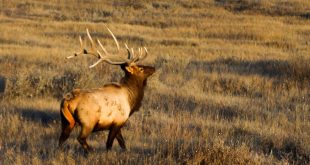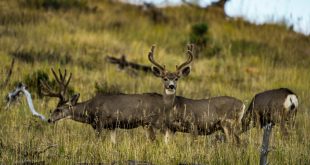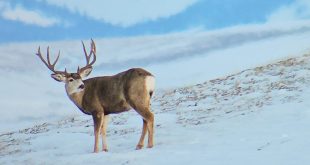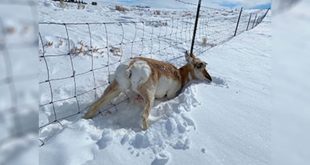
I love scouting for mule deer as much as the hunt itself. Which is why in my younger years I went in too early and blew up spots and lost opportunities at big bucks because I would go in too soon and too often. Effective scouting is an art form and once you are good at it, it will pay off in droves, but the learning curve can be painful. The most important part is all about the timing.
There is a caveat to this that needs to be understood though, scouting for archery hunts and rifle hunts are two different things. For good reason. Most archery seasons run somewhere around the last 10 days of August through the end of September, give or take. Any serious mule deer hunter will tell you that a mature buck’s behavior at the end of August is very different from the end of September and it’s all due to that little thing called velvet. The tail end of August sees a buck’s antlers begin to harden, culminating in them stripping their velvet somewhere around the 15th.
That one change sees the mature bucks transition during that time from the bigger basins to closer to cover. If you have a high country archery tag in your pocket, your best opportunity is going to be when the antlers are soft and the bucks are in the highest basins. In the juniper country, think of the more open areas where there is less opportunity to bump and harm sensitive growing antlers. The first few weeks of August are going to provide the most effective real time scouting opportunities as the bucks will have the same behavior as they will at the tail end of August.
On the other end of the spectrum, rifle hunts run in a variety seasons and make scouting much more of a challenge to pattern deer. Scouting in July and early August is about knowing what is in the country as much as it is about patterning the deer for a rifle hunter. Knowing that there are 25 bucks that used this basin is powerful knowledge when examining the country. The earliest large quota rifle seasons happen around the 15th of September in most places. At this point most mature bucks have transitioned out of the big open basins to the isolated pockets near the big basins where they will strip or hang out after they stripped their velvet.
From September 15 through October 1 the big bucks are caught in the open less and less, especially in the high pressure areas or units. That changes when the first dustings of snow happen in October. The bucks have to fuel their bodies through eating and opportunities to put on a stalk are much more present if and when the early October snows happen. This is where scouting is key, those bucks are in the pockets you saw them heading towards in September. They now have to stay out longer and are huntable.
Scouting for specific bucks becomes less important the closer to the last week of October your season gets. Then November hits and the rut usually kicks in full bore! At that point your scouting is all about knowing the country, pinch points, saddles and where the ladies hang out. Bucks will be on the move and effective rut hunters have scouted the most used travel routes in the mid to low elevation mule deer country.
Bottom line, late August and early September are the most effective times to scout for your rifle hunt. Any earlier and you can burn up basins even though it is a LOT of fun to go look at how the bucks in the reds are growing. Spend more time effectively scouting, understand where the bucks will be and when they will be there and this could be your best deer season yet!
 Eastmans' Official Blog | Mule Deer, Antelope, Elk Hunting and Bowhunting Magazine | Eastmans' Hunting Journals
Eastmans' Official Blog | Mule Deer, Antelope, Elk Hunting and Bowhunting Magazine | Eastmans' Hunting Journals





This article recognizes the delicate balance between giving these majestic creatures their space and the eagerness to prepare for a successful hunt. By addressing the question of timing, it provides valuable insights into the mule deer’s behavior patterns throughout the year, helping hunters make informed decisions about when to begin scouting. As nature enthusiasts and hunters alike, we’re reminded of the importance of respecting the natural rhythms of wildlife, and this article serves as a helpful guide for aligning our hunting activities with conservation-minded practices. So, whether you’re a seasoned mule deer hunter or a curious novice, this piece offers thoughtful considerations for finding the optimal balance between preparation and ethical wildlife stewardship.